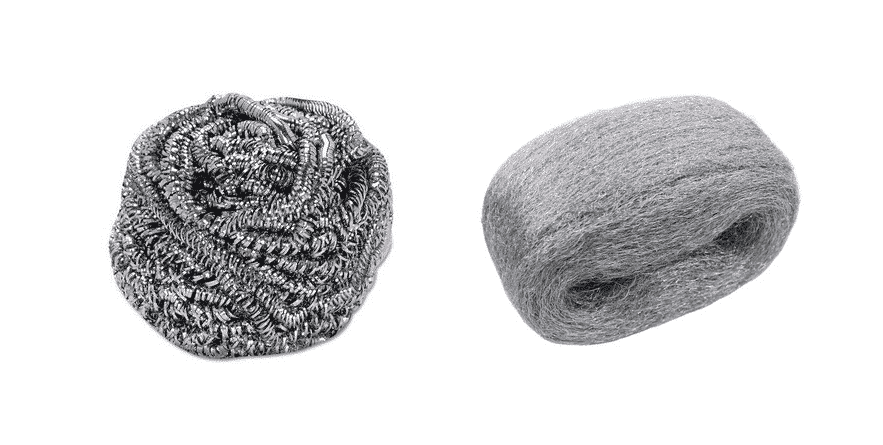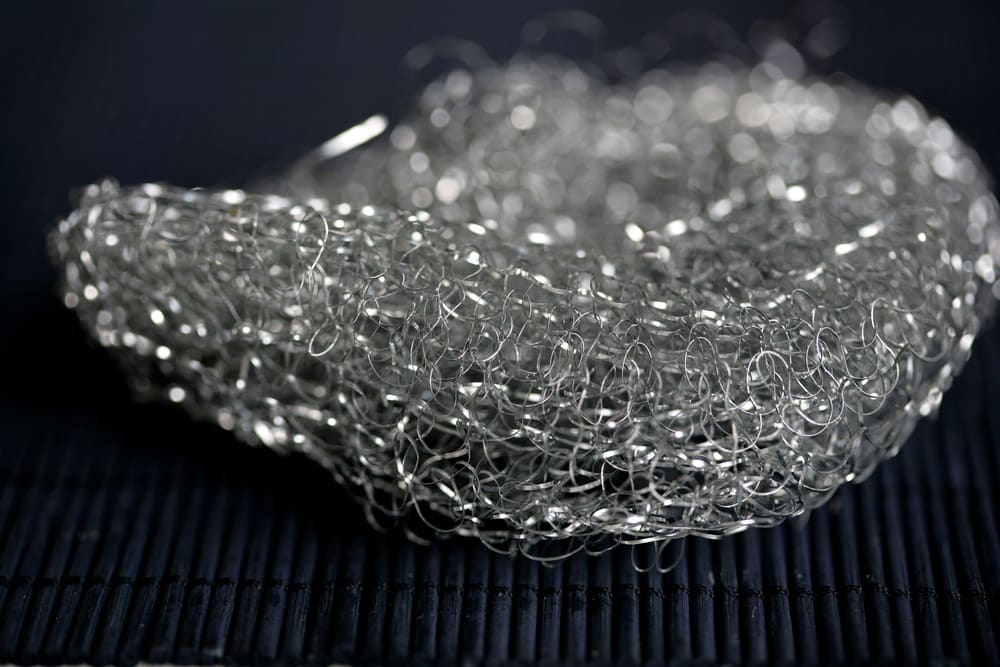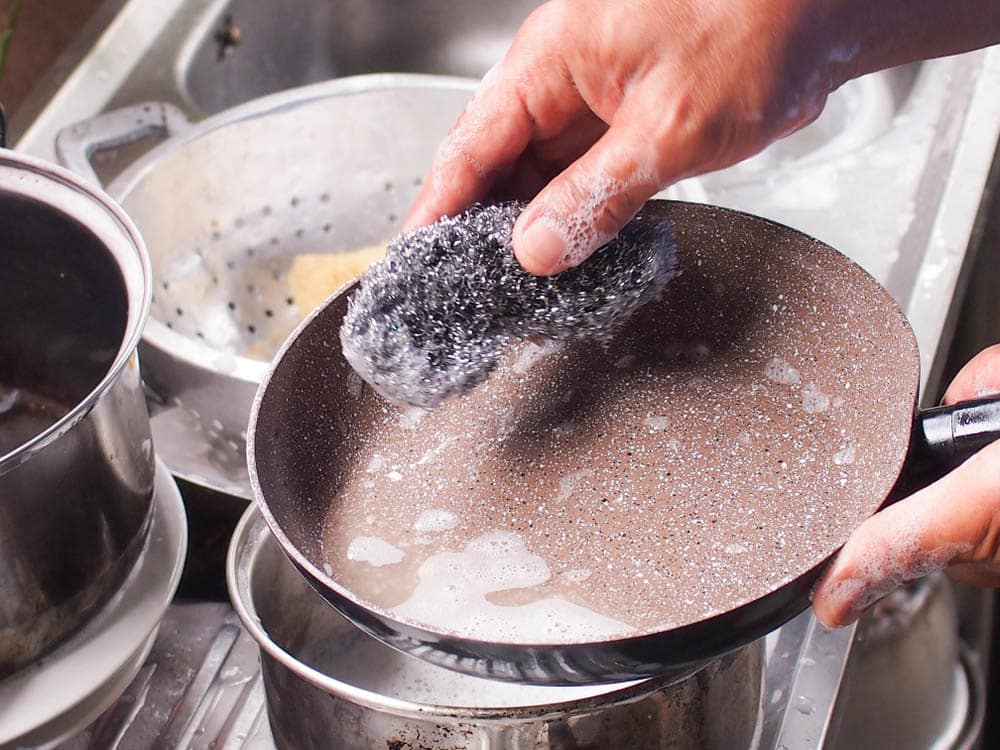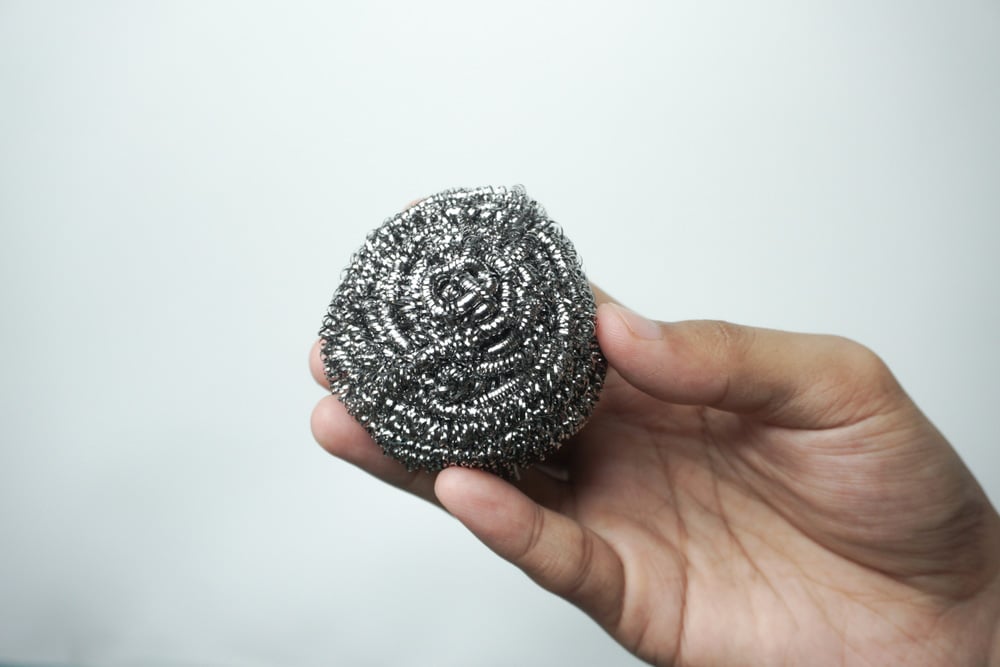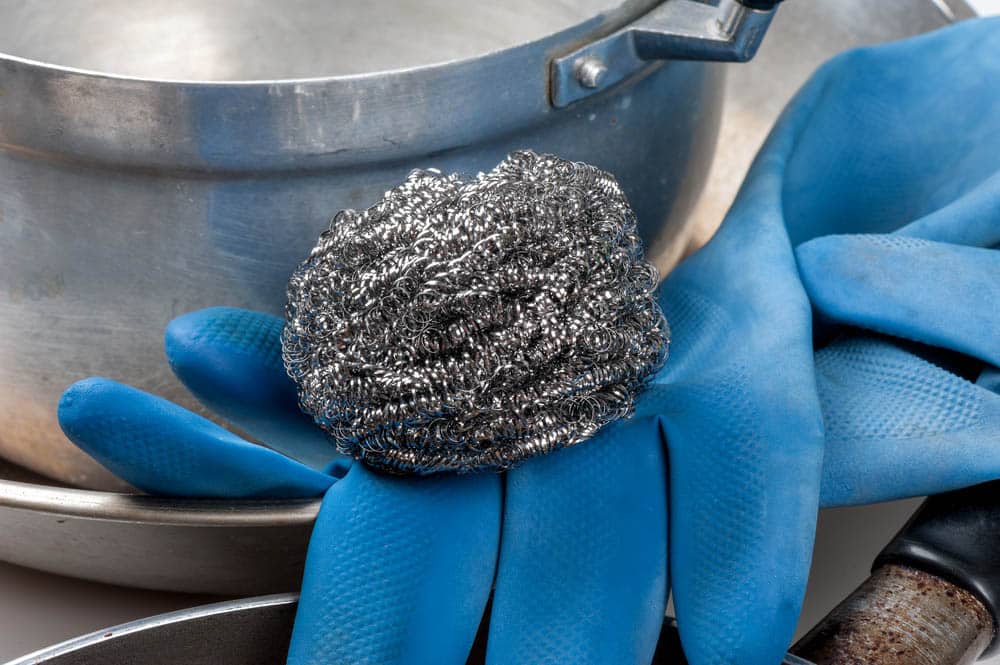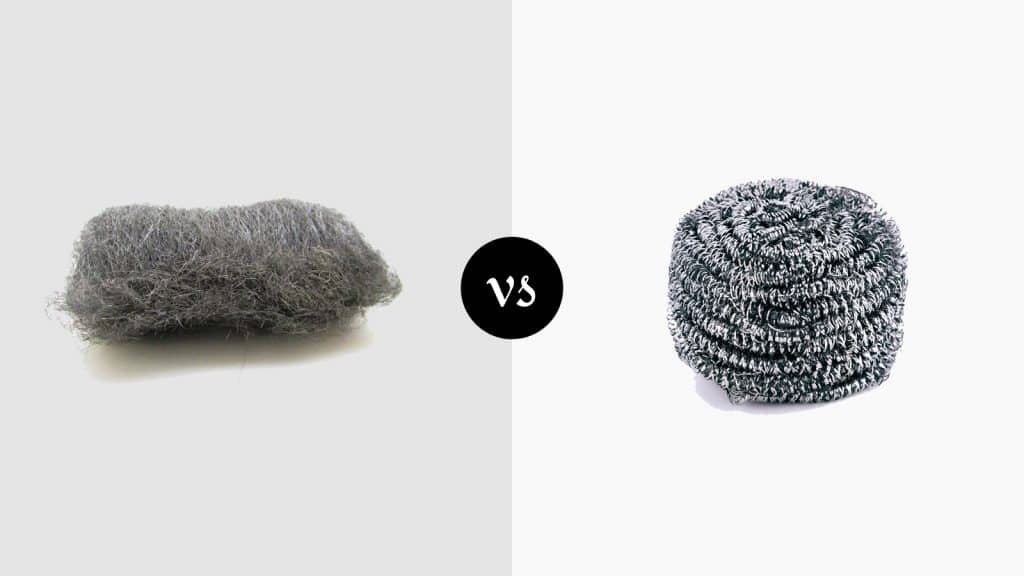
When it comes to kitchenware, steel wool and stainless steel are among the widely encountered materials. Whether you’re working in the kitchen or going about general tasks in any garage or household, you do end up using these substances in one form or another.
There’s no needing to be a hardware expert to understand the basic utility value of either. Despite the apparent simplicity, one has to be aware of the base characteristics, and consequent do’s and don’ts that ensue.
We’ll be taking you through a complete comparison of steel wool vs stainless steel wool, divulging all the details of how very different these two seemingly similar materials are.
Steel Wool vs Stainless Steel Wool Comparison
| Steel Wool | Stainless Steel Wool | |
|---|---|---|
| Definition | Abrasive Fuzzy Metallic Material With Sharp Shavings Removed | Coarse Abrasive Fuzzy Metallic Material With Sharp Shavings Removed And Zero Oil Present |
| Composition | Low-Grade Steel, Aluminum, Bronze | Ribbon-Like Strands Of Stainless Steel & Steel At Various Grades |
| Grades | Super Fine, Extra Fine, Very Fine, Fine, Medium, Medium Coarse, 'Coarse, and Extra Coarse | Extra Fine, Fine, Medium, Coarse' |
| Names | Steel Wool, Iron Wool, Wire Wool, Wire Sponge, Steel Wool Cleaning Pads | Stainless Steel Wool Only - No Other Alternate Terms Of Reference |
| Uses | Scouring Pots & Pans | Sanding Wood Types That Contain Tannic Acid |
| Alternate Uses | Light Sanding | Noise Cancellation, Heat Insulation, Various Industrial Applications |
| Safety | Take Care Not To Over Scrub To Prevent Surface Damage, Risk Of Overexposure By Inhalation Of Metal Particles So Wear Protective Gear If Sanding | Risk Of Overexposure By Inhalation Of Metal Particles So Wear Protective Gear If Sanding |
Steel Wool vs Stainless Steel Wool
To the craftsman, both steel wool and stainless steel wool are functional tools, but only one of these fuzzy masses is typically familiar to the home. Here is a breakdown of steel wool vs stainless steel wool so that you know all the differences.
Steel Wool
The fuzzy metallic stringy substance called steel wool is something that most of us are familiar with. Almost every kitchen has it in ready supply, and its applications are abundant. Let’s take a closer look at the defining characteristics of steel wool.
What Is Steel Wool?
Steel wool is an abrasive but handleable fuzzy metallic material made of various elongated fibers that are usually a blend of low-grade carbon steel but mostly iron that’s had all its sharp shavings removed.
What Is Steel Wool Made Of?
Steel wool doesn’t contain any wool, and you’d be surprised to know that it usually has very little steel. Steel wool is just a combination of low-grade steel, pieces of aluminum, occasionally bronze, and a few strands of steel.
All these strands are shredded into the thinnest strands possible and then rolled into a coil. The coil or covering is carefully secured so that the sharp strands don’t cause any damage.
Steel wool starts as low carbon steel wound around large spools that are then passed through a series of die-based cutting machines that pull and shear the sharp shavings away from the wire wool. The loop of steel wool is then used for multiple purposes.
It is either sold as-is, or the steel wool undergoes pressing to shape it into a dense steel wool pad, as is common for household cleaning.
Steel Wool Grades
Steel wool is sorted according to its density into eight different grades. ‘Super Fine,’ ‘Extra Fine,’ ‘Very Fine,’ ‘Fine,’ ‘Medium,’ ‘Medium Coarse,’ ‘Coarse,’ and ‘Extra Coarse’ are available.
Other Names For Steel Wool
Steel wool is often sold as iron wool, wire wool, or wire sponge. There are also various cleaning pads that feature pressed steel wool on one or both primary cleaning sides.
What Is Steel Wool Used For?
Steel wool is used to scrub thick strains and grease out of pots and pans. This tradition goes back to historical times when there was little water, no concept of dishing soap, and very stubborn fat.
Before then, solid steel was used to scrub pots and pans, unlike today, where solid steel is rarely used. This lack of steel usage is to maintain the health of non-stick utensils.
Harsh scrubbing with coarse steel can damage the non-stick lining, and this can cause long-term damage to health.
Steel Wool Alternate Uses
Steel wool is commonly used in the kitchen to scour pots and pans, but that doesn’t mean it’s restricted to kitchen use only. Steel wool is also used to sand furniture. Compared to sandpaper, steel wood is a better option due to its mendable shape, providing access to all areas.
Is Steel Wool Safe?
Steel wool is safe for dishwashing and poses no threat to health. However, excessive scrubbing can damage your kitchen utensils.
There is also the risk of overexposure to minute metal particles that one needs to consider prior to undertaking any project that involves a large amount of scrubbing or sanding using steel wool.
Stainless Steel Wool
Just as steel wool is indispensable to every household kitchen, stainless steel wool is equally essential and in demand by workshops, garages, and various other types of manufacturing and/or craft stations.
What Is Stainless Steel Wool?
Stainless steel wool is a fuzzy mass similar to regular steel wool that’s made specifically for the manufacturing industry.
It’s far coarser than regular steel wool and contains zero oil but is also longer-lasting and far more crumble resistant, which makes it ideal for furniture making, buffing wood/metal surfaces, and other craft-based applications.
What Is Stainless Steel Wool Made Of?
Stainless steel wool is made up of continuous ribbon-like strands of steel. It is made out of a combination of different grades of metal. The steel makes stainless steel wool resistant to high temperatures, and it can tolerate a temperature as high as 800 degrees Celsius.
Stainless Steel Wool Grades
Unlike regular steel wool, which is available across eight different grades, stainless steel wool is only divided into four different classifications, namely ‘Extra’ ‘Fine,’ ‘Fine,’ ‘Medium,’ and ‘Coarse.’
Other Names For Stainless Steel Wool
You’ll very seldom find stainless steel wool referred to as anything else other than stainless steel.
It is a specific tool used in specific applications and thus isn’t confused for other varieties like standard steel wool, which is available across various grades and in several incarnations.
What Is Stainless Steel Wool Used For?
Most craftsmen use stainless steel wool for sanding down woods like oak, walnut or mahogany that contain tannic acid.
Stainless Steel Wool Alternate Uses
Working with stainless steel wool is serious business. It is rarely used by individuals at home and has widespread utility value in automobile factories and other manufacturing plants. Stainless steel wool is far more rigid and more resistant to stress than steel wool.
Its strong nature makes it ideal for garage and repair work. Stainless steel wool has multiple properties that make it valued across other industrial applications.
It acts as corrosion resistance, doesn’t get damaged by highly resistant acids, helps in noise reduction as an excellent noise canceller, and works well to insulate heat. Regular steel wool tends to get rusty once encountering water.
However, stainless steel wool has extended durability and resists rusting to a greater degree.
Is Stainless Steel Wool Safe?
Stainless steel wool is rarely used in the kitchen or with anything that directly interacts with the human body. It is far more abrasive than steel wool but releases fewer particles when undergoing rigorous use.
However, just like stainless steel, stainless steel wool poses no immediate threat to the wellbeing of its user. This being said, steel wool of all sorts must be kept away from children, although very few homes typically have nor have seen stainless steel wool first-hand.
What Is The Difference Between Steel Wool And Stainless Steel Wool?
The main difference between steel wool and stainless steel wool is that regular steel wool is the variety in use in most households as an abrasive cleaning material, whereas stainless steel wool is almost always only found in commercial applications.
Most people have never encountered stainless steel wool in their lives before.
Is Steel Wool Wool Poisonous?
Handling steel wool in a limited capacity isn’t poisonous. Steel wool and stainless steel wool aren’t poisonous to the touch.
However, overexposure to the particles of steel generated when sanding using steel wool will irritate the respiratory tract and other areas and therefore can cause advanced symptoms like coughing, shortness of breath, itchy eyes, and throat and nasal inflammation, to name but a few.
Which Is Best, Steel Wool vs Stainless Steel Wool?
Stainless steel wool and regular steel wool are both used for very different purposes. Traditional steel wool is commonly used to scrub off dirty pots and pans, and occasionally you’ll find the furnisher using it to sand something.
Regular steel wool is easy to use and can be used by anyone. Opt for stainless steel wool or even bronze wool if rust is a concern.
